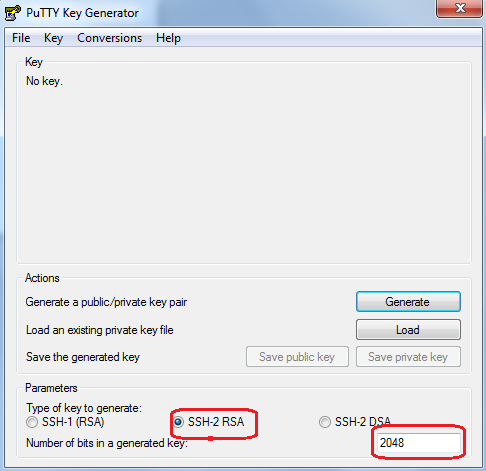- Oracle Ilom Ssh Generate Keys Code
- Oracle Ilom Ssh Generate Keys Download
- Oracle Ilom 4.0 Documentation
To upload and append an Oracle ILOM account with a generated public SSH key, see the following web-based instructions. Before You Begin. Generate the private and public SSH keys using an SSH connectivity tool, like ssh-keygen, and then store the generated SSH key files on a remote SSH system. Generating an SSH Key Pair Using PuTTY Key Generator To generate an SSH key pair using the PuTTY Key Generator, Find puttygen.exe in the PuTTY folder on. To generate a new SSH Key, follow these steps: Log in to the Oracle ILOM SP or CMM web interface. Click Configuration - System Management Access - SSH Server. The SSH Server Settings page appears. Select RSA by clicking the Generate RSA Key button, or select DSA by clicking the Generate DSA Key.
Oracle Ilom Ssh Generate Keys Code

If you plan on using the Oracle Cloud Services, you will need to generate some SSH Keys to enable secure access to Oracle Cloud resources from applications such as SQL Developer and even terminal connections. Below I will outline the process for creating SSH Keys on macOS.
Generating an SSH key with macOS is relatively straight forward using the variety of Terminal applications available for the OS.
I have written this post as part of a prereq documentation for building on Oracle Cloud Services, but the step apply regardless of your objective. There are plenty of places documenting these steps for both Windows and Linux Ipsec pre shared key psk generator.
Adding Users on an Instance. If you created your instance using an Oracle-provided Linux or CentOS image, you can use SSH to access your instance from a remote host as the opc user. If you created your instance using the Ubuntu image, you can use SSH to access your instance from a remote host as the ubuntu user. After logging in, you can add users on your instance. By associating a generated public SSH key file with an Oracle ILOM account, automated scripts can execute SP commands securely in Oracle ILOM without manual intervention, or the need to embed a cleartext password. Prior to appending a public SSH key file to an Oracle ILOM user account. Mar 12, 2017 Generate an SSH key on macOS (Sierra 10.12.3) If you plan on using the Oracle Cloud Services, you will need to generate some SSH Keys to enable secure access to Oracle Cloud resources from applications such as SQL Developer and even terminal connections.
To open the a terminal application you can either find it in the Dock, but if it’s not there, follow these steps:
- Click the Applications icon in the dock
- Search for and click the Utilities folder
- Launch the Terminal application
Oracle Ilom Ssh Generate Keys Download
Once your terminal window is open, to generate the ssh key, follow these steps:
Your private key is saved as “cloudKey” and your public key is “cloudKey.pub” both in the ~/.ssh directory. Next steps will be use these files to enable secure remote access without the need to use passwords.
Once you have completed this, you can now use the generated keys to populate the SSH Key dialogue box.
Nov 04, 2015 How To: iLOM SNAPSHOT using CLI Below is just an example on how to collect iLOM snapshot using CLI. Login to ILOM CLI ssh root@ilomipaddressofthehost - OR, from the host operating system (provided that ipmitool is configured) # ipmitool sunoem cli.
Take a look at the following blog posts for examples on how you can use this to connect to the Oracle Database Cloud Service.
Enjoy! /mann-co-supply-crate-key-generator-download.html.
Related
Obtain a Custom SSL Certificate and Private Key Using OpenSSLToolkit
This procedure is a simplified description on how to obtain a custom SSL Certificate using the OpenSSL toolkit. Your requirement to use a temporary self-signed or a certificate authority-signed certificate should be determined by your site administrator or security officer. In the event you do need to obtain a custom SSL certificate (temporary self-signed or certificate authority-signed), you can follow these example OpenSSL command-line instructions below.
Oracle Ilom 4.0 Documentation

- Createa network share or local directory to store the certificate andprivate key.
- To generate a new RSA privatekey using the OpenSSL toolkit, type:
openssl genrsa -out <foo>.key 2048
Where <foo> equals the nameof the private key.
Note - This private key is a 2048 bit RSA key which is storedin a PEM format so that it is readable as ASCII text. - To generate a certificate signingrequest (CSR) using the OpenSSL toolkit, type:
openssl req -new -key <foo>.key -out <foo>.csr
Where <foo> equals the nameof the certificate signing request.
Note - During the generation of the CSR, you will be promptedfor several pieces of information.A <foo>.csr fileshould now appear in your current working directory.
- To generate an SSL certificate,perform one of the following:
- Generate a temporary self-signed certificate(good for 365 days).
The self-signed SSL certificate is generated from the server.key privatekey and server.csr files.
Using the OpenSSL toolkit, type:
openssl x509 -req -days 365 -in <foo>.csr
-signkey <foo>.key -out <foo>.cert
Where <foo> equals the nameassigned to the private key (.key) or certificate (.cert).
Note - This temporary certificate will generate an error inthe client browser to the effect that the signing certificate authorityis unknown and not trusted. If this error is unacceptable, you shouldrequest the Certificate Authority to issue you a signed certificate. - Obtainan officially signed certificate from a certificate authority provider.
Submit your certificate signing request (<foo>.csr)to an SSL certificate Authority provider. Most certificate authorityproviders require you to cut and paste the CSR output in a web applicationscreen. It can typically take up to seven business days to receiveyour signed certificate.
- Generate a temporary self-signed certificate(good for 365 days).
- Upload the new SSL certificateand private key to Oracle ILOM.
See the following instructions, Upload a Custom SSL Certificate and Private Key to Oracle ILOM.